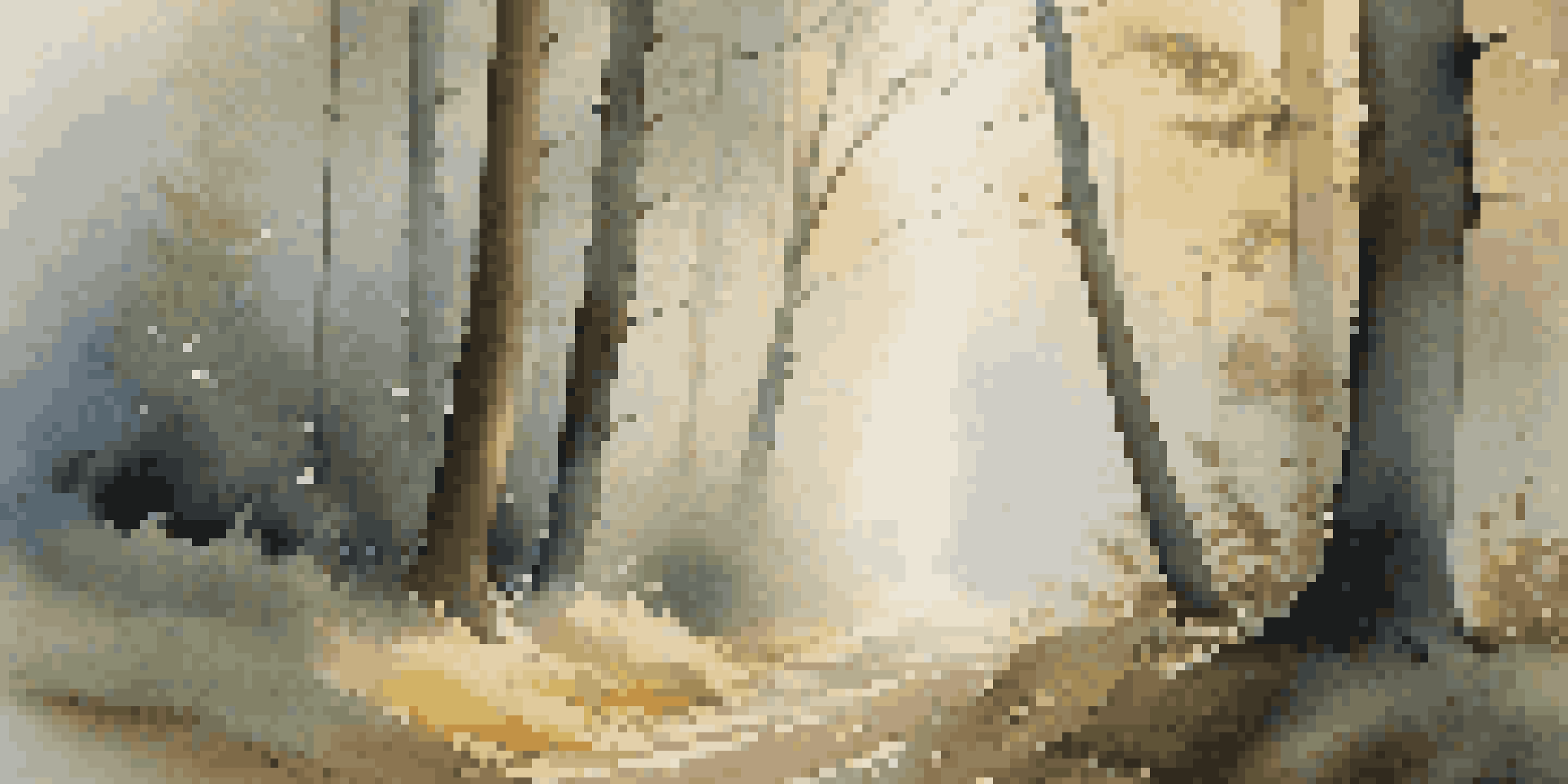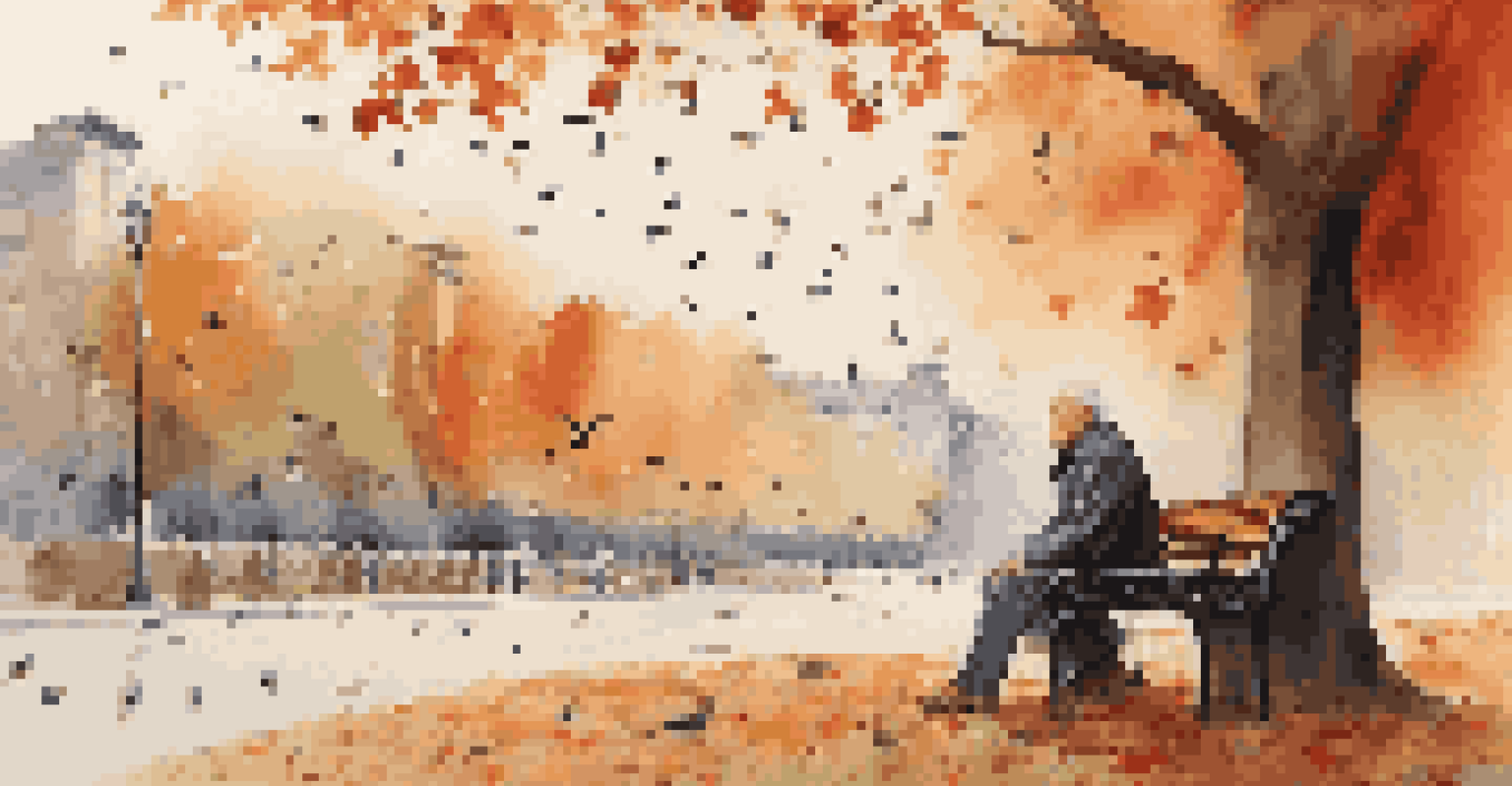Literature and the Art of Storytelling Through Photography

The Connection Between Literature and Photography
Literature and photography both serve as powerful mediums for storytelling. While literature uses words to weave intricate tales, photography captures moments in a single frame, evoking emotions and narratives instantly. Both forms invite the audience to interpret and engage with the story being told, albeit through different senses.
A picture is worth a thousand words.
In literature, a well-crafted sentence can paint vivid images in our minds, just as a photograph can convey a thousand words. This synergy allows for a deeper exploration of themes, characters, and emotions, whether through the pages of a novel or the lens of a camera. Ultimately, both arts aim to connect us to human experiences and provoke thought.
Both mediums have their own techniques and styles, but they often overlap in purpose: to share stories that resonate with audiences. By understanding their relationship, we can appreciate how they complement each other and expand our view of storytelling.
Visual Storytelling: The Power of a Single Image
A photograph can encapsulate a story in a way that words sometimes cannot. Just think of iconic images like the Afghan Girl by Steve McCurry; it tells a profound story of resilience and struggle without a single word. This ability to provoke thought and emotion through a visual cue is what makes photography a unique form of storytelling.

The beauty of a single image lies in its ability to leave room for interpretation. Unlike literature, where the narrative is guided by the author's words, a photograph invites viewers to bring their own experiences and emotions into the story. This interaction can create a deeply personal connection between the viewer and the image.
Literature and Photography Unite
Both literature and photography are powerful storytelling mediums that complement each other, offering unique ways to evoke emotions and convey narratives.
Moreover, photographers often draw on literary techniques, such as symbolism and narrative arc, to enhance the depth of their work. This blending of visual and literary storytelling techniques enriches the viewer's experience, offering layers of meaning that can be peeled back like the pages of a book.
Capturing Emotion: Photography as a Narrative Tool
One of the most compelling aspects of photography is its capacity to evoke emotions. Just as an author can elicit feelings through descriptive language, a photograph can capture raw emotion in a single moment. Whether it's the joy on a child's face or the somber gaze of an elderly person, these emotions resonate and tell their own stories.
Photography is the story I fail to put into words.
Photographers often seek out these moments, much like authors search for the perfect words. By focusing on expressions, body language, and context, they create visual narratives that can be as moving as a beautifully crafted poem or novel. This emotional connection can leave a lasting impact on viewers, making them reflect on their own experiences.
In essence, capturing emotion is about timing and intuition. A great photograph, like a well-timed sentence, can communicate complex feelings and narratives in an instant, reminding us of the power of both visual and written storytelling.
Narrative Techniques: Composing a Photographic Story
Photographers employ various narrative techniques to compose their images, similar to how authors construct their stories. Techniques such as framing, light, and perspective play crucial roles in guiding the viewer's eye and shaping the narrative. For instance, using leading lines can draw attention to the subject, just as a strong opening line grabs a reader's attention.
Additionally, the choice of color and contrast can set the mood of a photograph, affecting how the story is perceived, akin to tone in literature. A bright, vibrant image may convey happiness, while darker tones might evoke sadness or nostalgia, inviting viewers to engage with the narrative on multiple levels.
Emotion Captured in a Moment
Photography has the remarkable ability to capture raw emotions in a single frame, creating visual narratives that resonate deeply with viewers.
Ultimately, these compositional techniques are what elevate a photograph from a mere image to a compelling story. Just as an author carefully chooses their words, a photographer curates their elements to craft a narrative that captivates and resonates.
The Role of Context in Storytelling
Context plays a pivotal role in storytelling, whether through literature or photography. In literature, the setting, time period, and cultural background can shape a narrative significantly. Similarly, in photography, the context can give deeper meaning to an image, influencing how it's interpreted by viewers.
For instance, a photo taken during a historical event carries a weight that can alter its narrative. Understanding the context allows viewers to appreciate the story behind the image, much like knowing the backdrop of a novel enhances its themes and characters. This awareness enriches the viewing experience and fosters a deeper connection.
Moreover, context can change over time. A photograph that speaks to a particular moment in history may take on new meanings as society evolves. This fluidity in interpretation is a fascinating aspect of storytelling that highlights the ongoing dialogue between the viewer, the subject, and the broader world.
The Intersection of Creativity: Literature Meets Photography
The intersection of literature and photography inspires creativity in both realms. Writers often find inspiration in photographs, using them as prompts to craft stories, while photographers may draw on literary themes to inform their visual work. This cross-pollination enriches both art forms, leading to innovative storytelling.
Consider how a photo essay can narrate a story through a series of images, mirroring the structure of a novel. Each photograph acts like a chapter, contributing to the overall narrative arc. By merging these two forms of storytelling, artists can explore complex themes and present them in multifaceted ways.
Context Shapes Storytelling
The context in which a photograph is taken significantly influences its narrative, much like how setting and cultural background affect literature.
This interplay encourages artists to think beyond traditional boundaries. The collaboration between writers and photographers can result in compelling projects that engage audiences in new and exciting ways, highlighting the beauty and richness of storytelling in all its forms.
The Future of Storytelling: Evolving with Technology
As technology continues to evolve, so does the art of storytelling in both literature and photography. Digital platforms allow for the sharing of stories in ways previously unimaginable, enabling photographers to reach wider audiences and writers to explore new formats. This shift not only enhances accessibility but also diversifies the ways stories can be told.
For example, interactive storytelling blends visuals with written narratives, inviting audiences to experience stories in immersive ways. This convergence of literature and photography opens up exciting possibilities, encouraging experimentation and innovation in storytelling methods.

Looking ahead, the future of storytelling lies in the hands of creators willing to embrace change. By continuing to explore the relationship between literature and photography, artists can push boundaries and redefine how we connect with stories in our increasingly visual world.